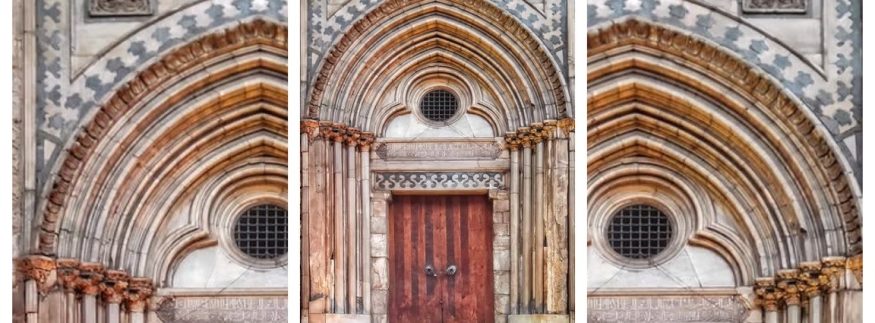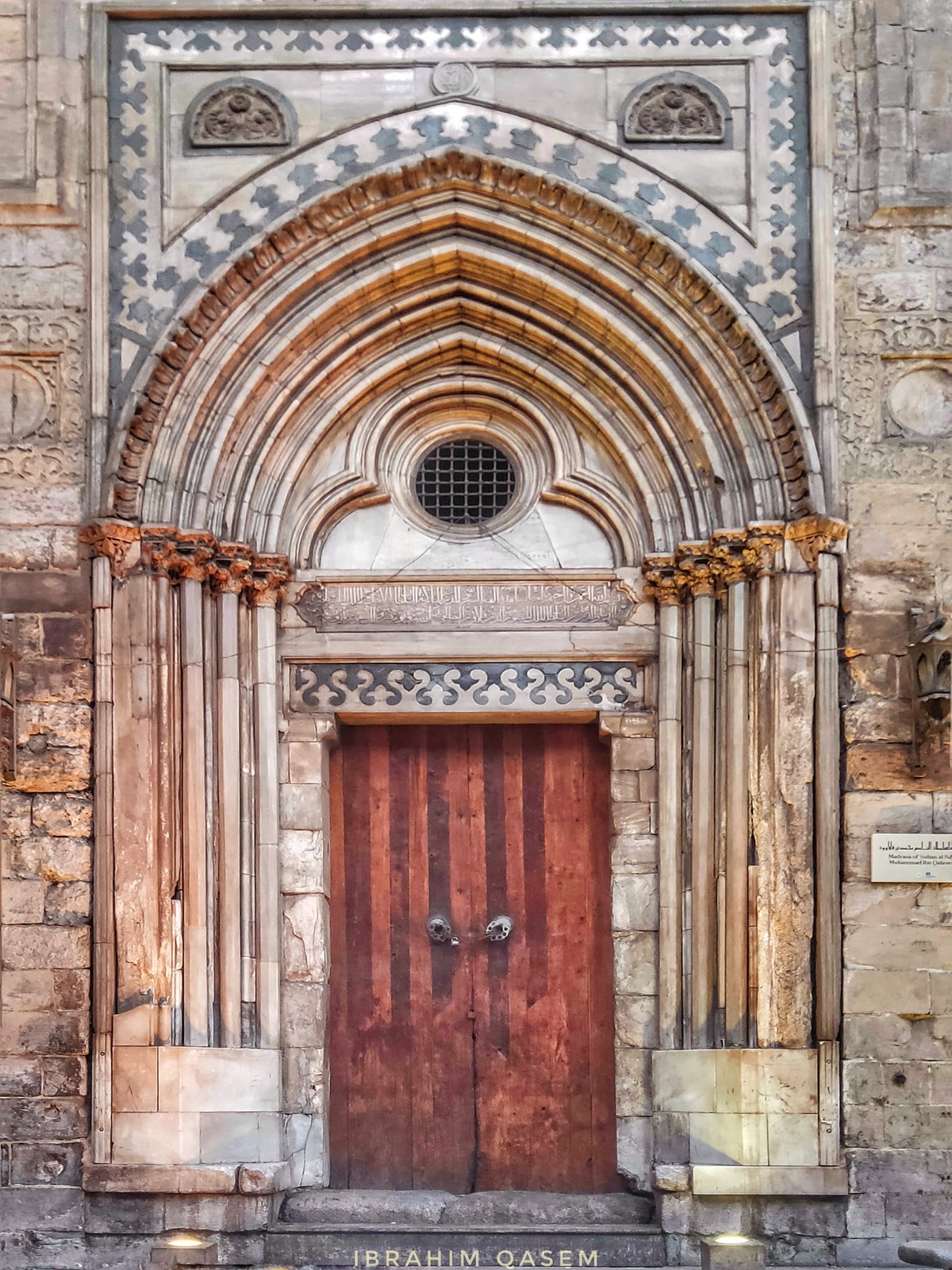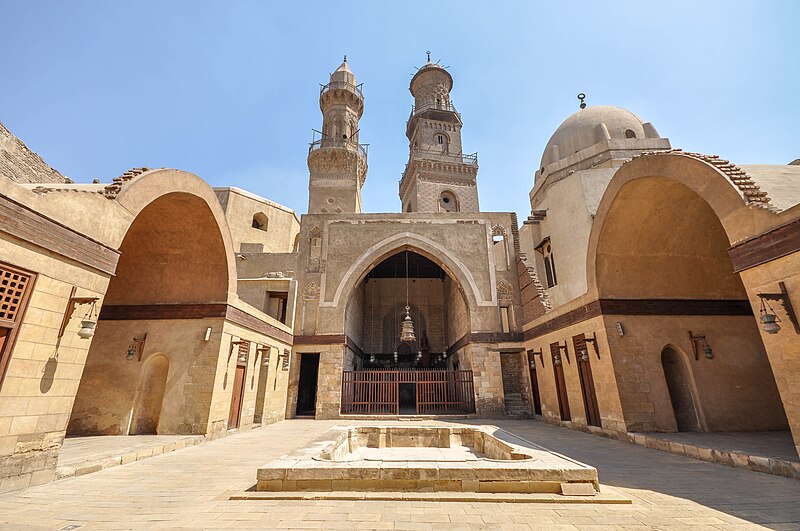A Door through Time: The Fascinating Tale of a Church Door in a Mosque
architecture arts & culture cairo history Coptic Cairo El-Muizz history Mamluk Architecture mosque
Safy Allam
Image via Ibrahim Qasim
While walking down Al-Muizz Street in the heart of Cairo, you’ll stumble upon the Madrasa and Dome of Sultan Al-Nasir Muhammad Ibn Qalawun. At first glance, it seems like just another historic landmark. But look closer, and you’ll discover a fascinating secret: a mosque with a door that once belonged to a church. And not just any church door; this one symbolises a historic victory, marking the liberation of Acre, the Crusaders’ last stronghold in the Levant, by Sultan Al-Nasir Muhammad.
Sultan Al-Nasir Muhammad: The Visionary Leader
Sultan Al-Nasir Muhammad, the ninth ruler of the Mamluk Sultanate, played a pivotal role in this chapter of history. Known for his bravery and advocating vision, Al-Nasir led campaigns against the Crusaders and Mongols and worked tirelessly to eliminate corruption. Despite becoming sultan at the age of eight, his leadership eventually transformed Egypt into a cultural and political powerhouse. By the time he reclaimed the throne at 14, he had earned the title Servant of the Two Holy Sanctuaries, and his name resonated across the Islamic world.
A Door with a Journey

Image via Ibrahim Qasim
This extraordinary story begins in 1291 AD when Sultan Al-Ashraf Khalil Ibn Qalawun liberated Acre. As a symbol of the monumental victory, he ordered the ornate main door of a church in the city to be transported to Cairo. The door was later installed in the madrasa built by Sultan Zain al-Din Kitbugha, where it stands to this day as a relic of triumph and resilience.
A Monument That Tells a Story

Image via wikipedia
Looking at The Madrasa of Al-Nasir Muhammad as a whole, one can see that it is a masterpiece of Mamluk architecture, designed with an orthogonal layout. Its open courtyard is surrounded by four iwans (halls), each dedicated to teaching one of the four Islamic schools of thought. The qibla iwan, facing Mecca, is the centrepiece, featuring an intricately decorated mihrab and two magnificent marble columns.
The complex also includes a dome where Al-Nasir’s son and mother are buried. The dome’s stunning woodwork and intricate decorations showcase the peak of Mamluk artistry. A covered walkway once connected the dome to the madrasa, but today, only two iwans remain intact.
The most striking feature, however, is the madrasa’s entrance, a gothic-style marble door that stands out from the surrounding Islamic architecture. Its design reveals its origin as a church door in Acre. This door isn’t merely a functional piece; it’s a historical artefact commemorating a great victory and the enduring legacy of the Mamluks.
A Facade Full of Details
Despite the passing of time, the madrasa’s stone facade still preserves its dazzling details. Carved arches, decorative windows, and elegant muqarnas adorn the structure, while notched balconies and inscriptions of Sultan Al-Nasir Muhammad’s name add to its grandeur. Each element tells a story of cultural flourishing and architectural brilliance. This door is more than an entryway; it’s a time machine that opens a portal to a glorious past of conquest, resilience, and pride.
recommended
 Cafés
Cafés
Bite Into the Croffle Craze: The Best 5 Spots to Try Croffles in Cairo
cafes cairo +2 City Life
City Life



